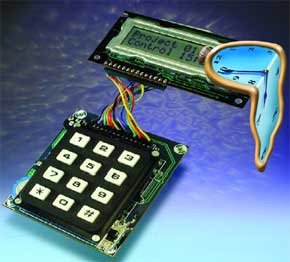Project Timekeeper
Keep track of several projects at once using a PIC16F84

This is a MEMBER ONLY article. You need a subscription to read this article.
- Unlimited access to online Member Only articles
- 3 new editions Elektor Magazine (digital)
- More than 5000 Gerber files
- 20% member discount on e-books (at elektor.com)
- 10% member discount on Products (at elektor.com)
Available from €5.33 per month.
What is Members Only
Elektor is committed to providing high-quality content on electronics, catering to tens of thousands of paying members. As part of this commitment, Elektor has launched Premium, an initiative that offers exclusive online articles to members sometimes even before they appear in the magazine.
Every day, members can access in-depth articles that showcase the best of Elektor's premium content.
This initiative aims to reward members with early access. Once logged in, members can easily enjoy this exclusive content and engage in discussions about featured projects. While Premium adds to the existing resources available, Elektor will continue to provide a wealth of free information.
Join the Elektor community today to take advantage of Premium and other benefits!
Materials
Gerber file
CAM/CAD data for the PCB referred to in this article is available as a Gerber file. Elektor GREEN and GOLD members can exclusively download these files for free as part of their membership. Gerber files allow a PCB to be produced on an appropriate device available locally, or through an online PCB manufacturing service.
Elektor recommends the Elektor PCB Service service from its business partner Eurocircuits or AISLER as the best services for its own prototypes and volume production.
The use of our Gerber files is provided under a modified Creative Commons license. Creative Commons offers authors, scientists, educators and other creatives the freedom to handle their copyright in a more free way without losing their ownership.
Component list
R1 = 270Ohm
R2 = 1kOhm
R3 = 33kOhm
R4 = 22kOhm
R5,R6,R7 = 470Ohm
R8 = 10kOhm
P1 = 10kO preset H
Capacitors:
C1,C2 = 22pF
C3 = 100nF
C4,C6,C7 = 10µF 25V radial
C5 = 100mF 5.5 V Goldcap
Semiconductors:
D1-D5 = 1N4148
T1 = BC557
IC1 = PIC16F84-10P, programmed, order code 020350-41
IC2 = DS1302
IC3 = 4011
IC4 = LP2950CZ5.0 (low-drop voltage regulator, 5V, TO92 case)
Miscellaneous:
K1 = 14-way pinheader
K2 = 7-way socket strip
BZ1 = buzzer, 5 VDC
BT1 = 9V battery (6F22) with clip-on leads
X1 = 10MHz quartz crystal
X2 = 32.768kHz quartz crystal
S1 = on/off switch
2 x 16 character alphanumerical LCD Module
Telephone keypad (4x3 matrix), e.g., Conrad Electronics # 709840
PCB, available from The PCBShop
Disk (source & object code), Free Download



Discussion (0 comments)